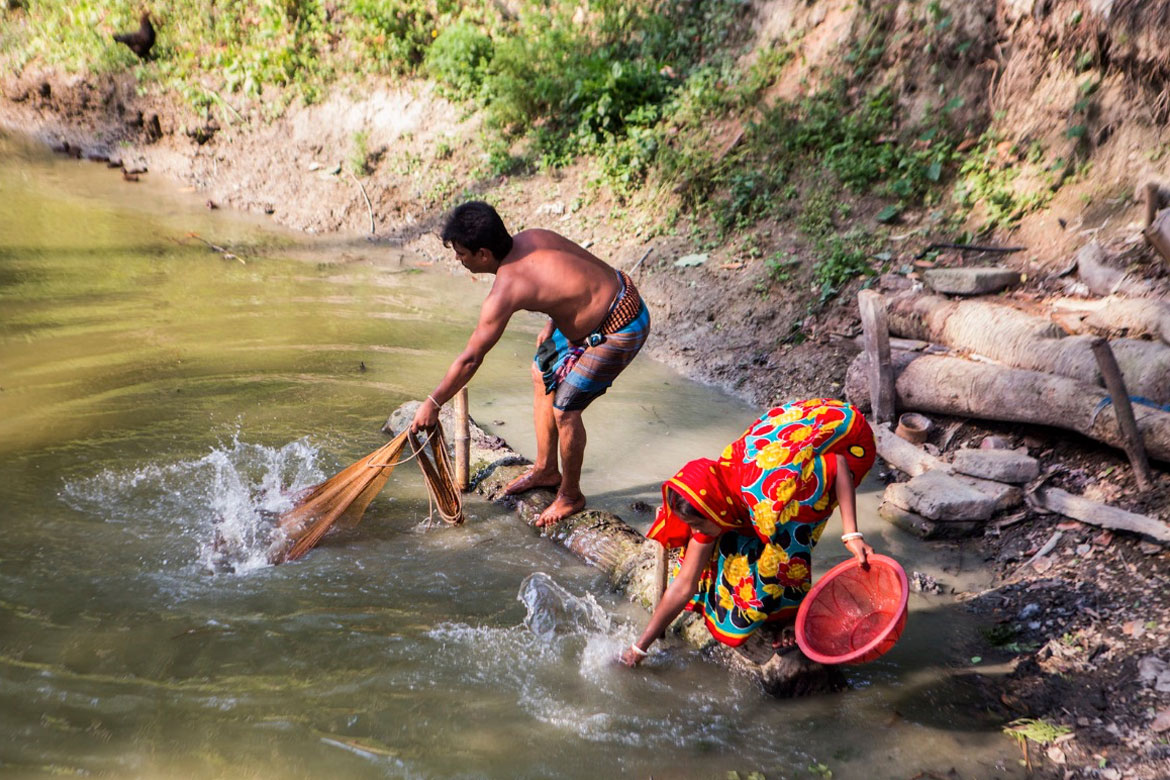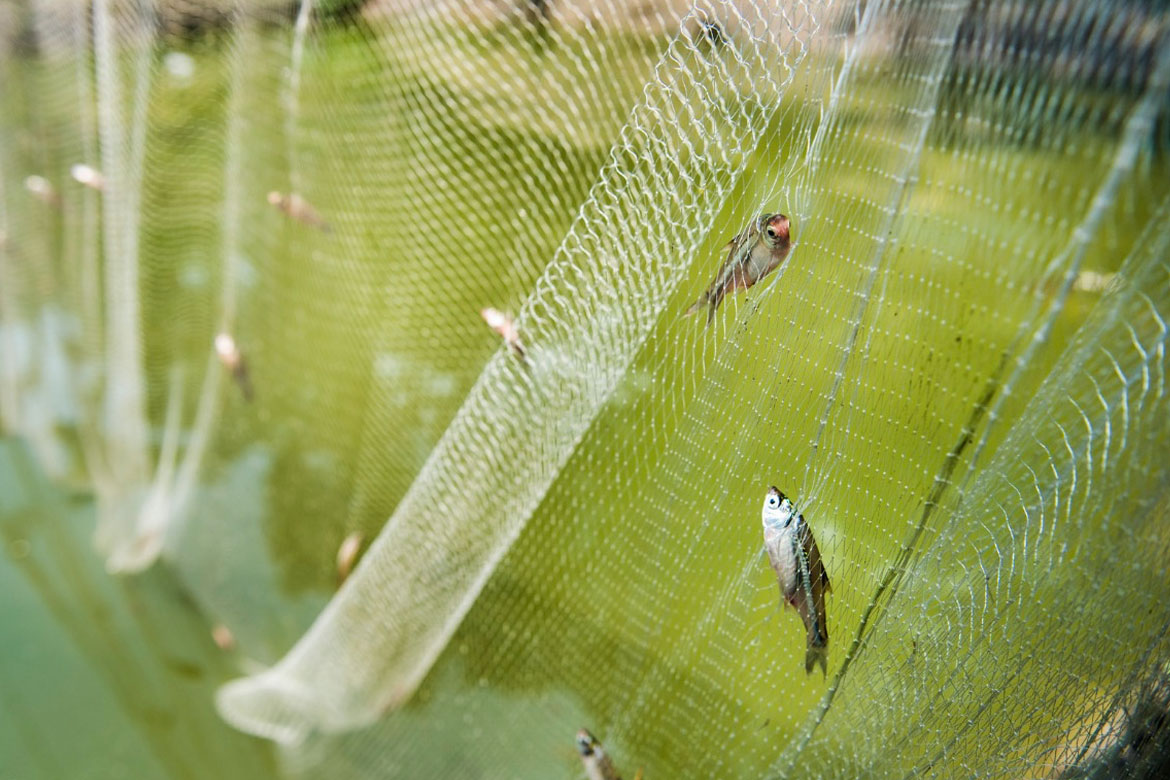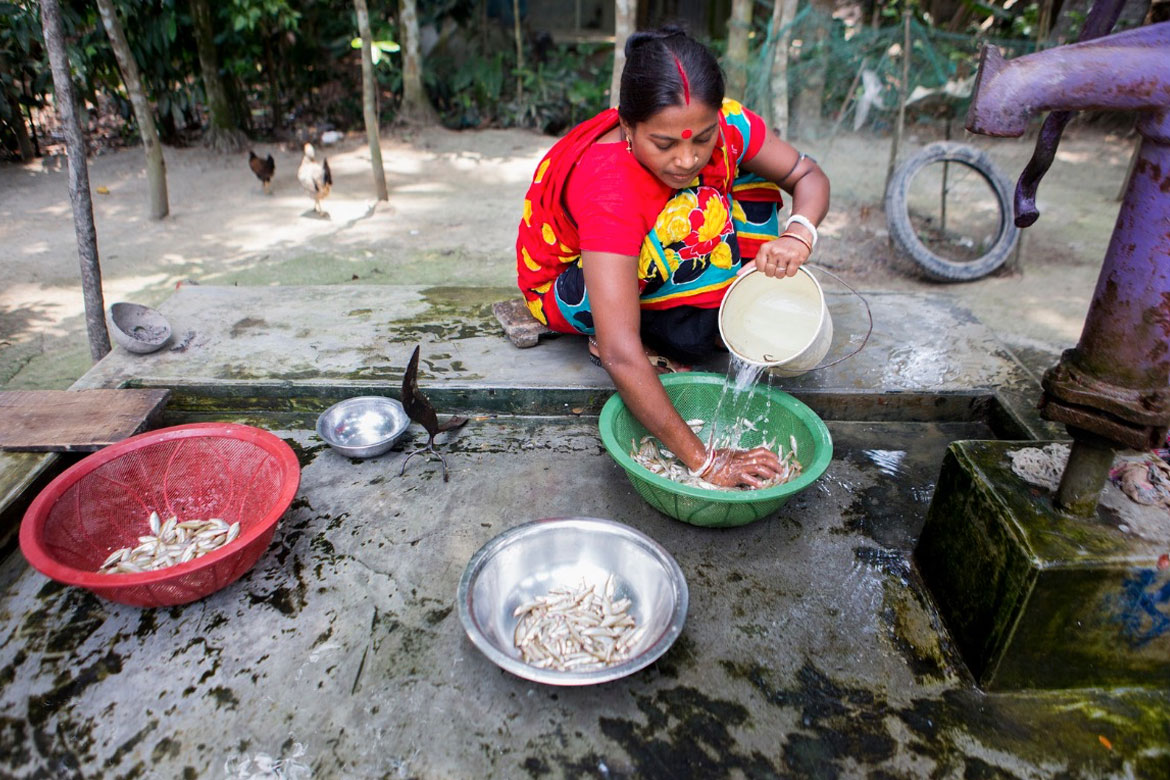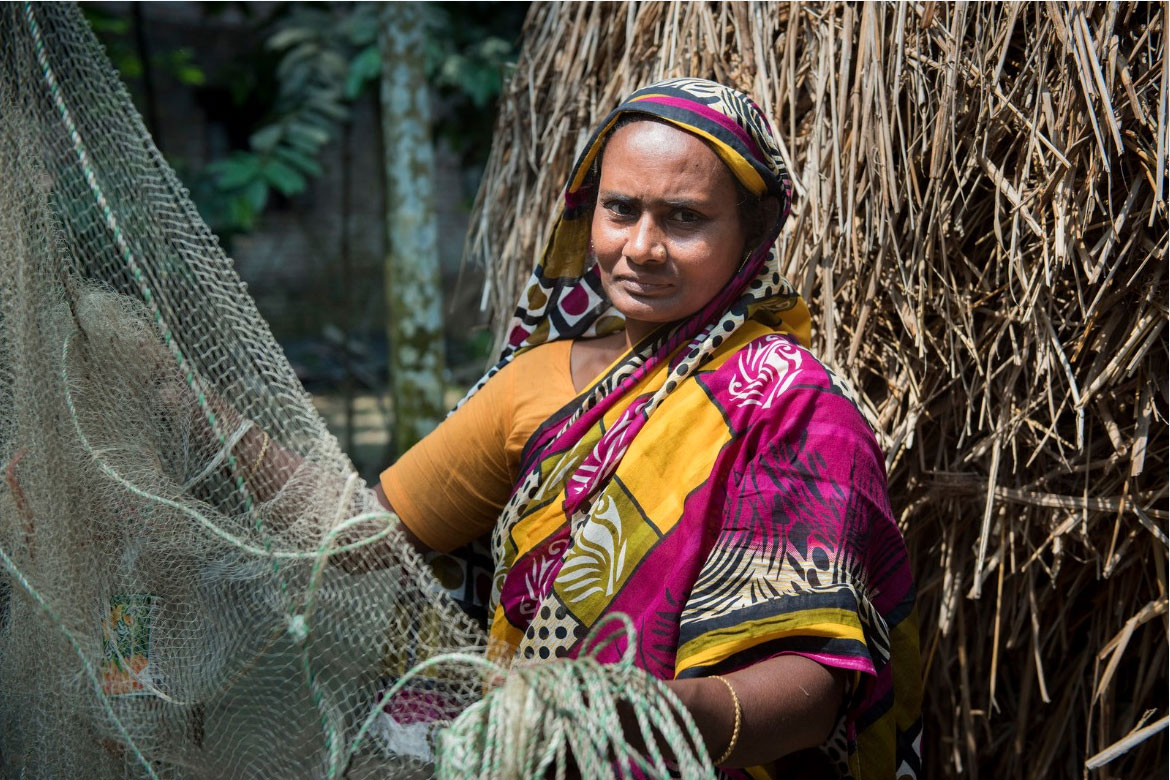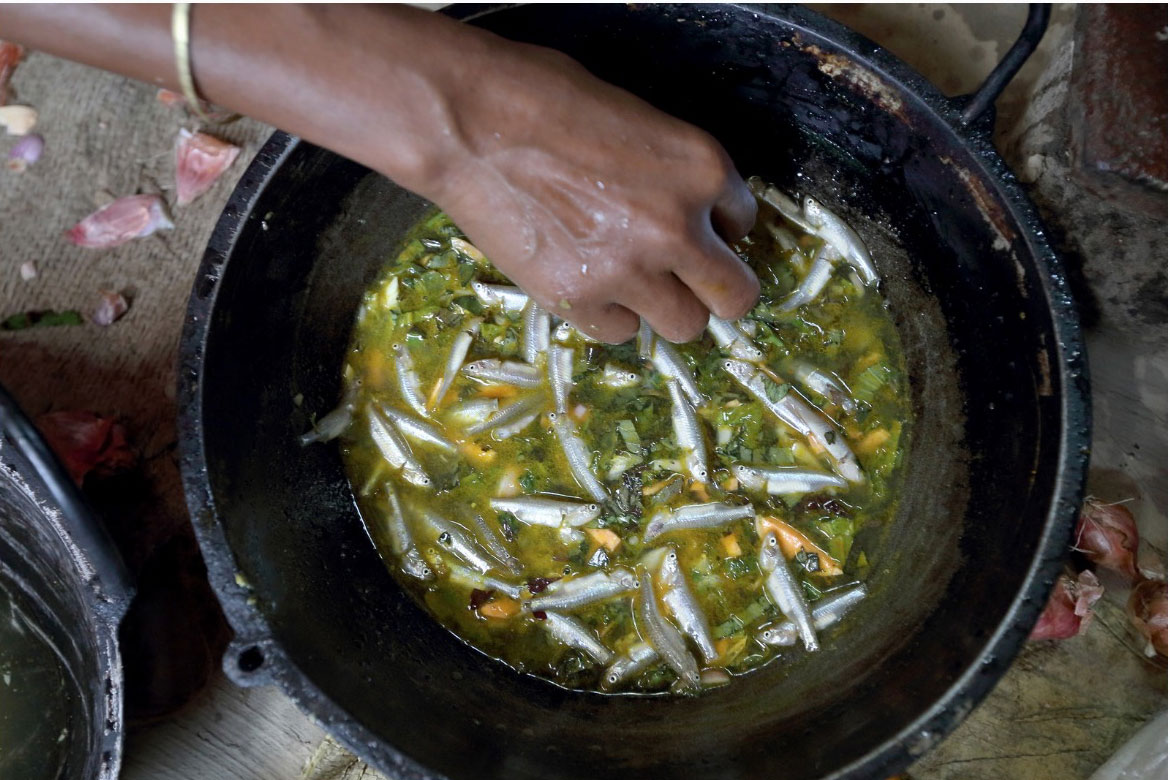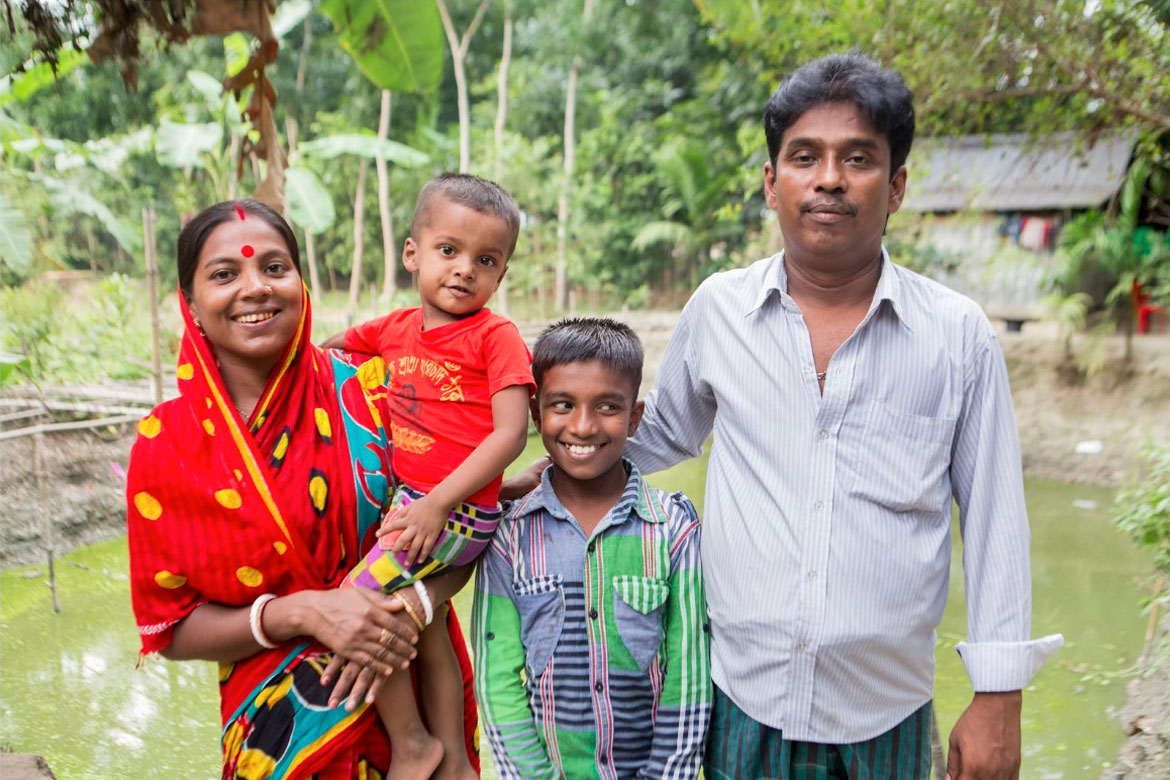-

Gill nets enable
women to harvest nutritious
fish in Bangladesh
Gill nets are a low-cost technology making fish harvesting more accessible to women and increasing household consumption of fish
In Bangladesh, both women and men are actively involved in aquaculture. But in poor households, where average income is USD 65.25 per month, women face barriers that prevent them from catching fish, even from their own homestead ponds.
Gender-related cultural and religious expectations prohibit women from harvesting fish, a job often seen as a man’s responsibility. Women are also reluctant to enter ponds to harvest fish because they have to get their sarees wet, which then need to be washed and hung out to dry for a day.
As a consequence, women mostly feed the fish and help clean the ponds, while men mostly harvest the fish, as well as do the marketing and make the financial decisions. This limits women’s access to fish for their families, whose diets often lack the micronutrients present in fish.
“It was a problem for us when my husband wasn’t in the house to catch fish,” explains Shantoni Rani, a housewife from Madhop Pasha, Barisal. She would first try with a fishhook, but if unsuccessful, she would buy fish from the market or pay BDT 300 (USD 3.79) to local men to harvest the fish for her, a big expense for a poor household.
To address this barrier and improve nutritional intake, the USAID-funded project, Aquaculture for Income and Nutrition led by WorldFish, teaches poor rural women how to grow nutrient-rich small fish called mola in their household ponds and how to easily harvest them using a gill net, which does not require them to enter the pond.
Women attend an eight-day training course where they learn good management practices for mola fish farming and how to use a gill net.
“I couldn’t catch before, but after getting this net, I can catch fish. Now I can prepare the net, pull the net and catch fish easily” – Mina, mother of four
Gill nets are vertical panels of netting set in a straight line. Research by the project, which compared five nets with different mesh sizes to discover the one best suited to catching small fish and that met women’s needs and preferences, found that gill nets with 1.7 cm mesh were women’s top choice.
Women can stand on the pond bank to harvest fish, which takes around 30 minutes from setting the net to pulling in the catch. A single harvest of mola using a gill net provides enough fish for one family meal. In addition to the ease of harvest and improved access, mola multiplies frequently, which is encouraging women to harvest fish regularly and helping households increase their consumption of fish.
As part of the training, women learn how to make the lightweight gill nets, which measure 7.5 meters wide by 1.8 meters high. They can buy the mesh and rope from the market at a low cost, and use empty bottles (for floats) and rocks or broken bricks (as sinkers) from around the house.
Mother-of-four Mina from Madhap Pasha, Barisal, explains: “I came to know the procedure of making this net, how to make it with the nylon. We have learnt how to use it and now we can use it properly and catch fish from our pond.”
“I couldn’t catch before, but after getting this net, I can catch fish. Now I can prepare the net, pull the net and catch fish easily,” she says happily. “We don’t need any male for this and we also don’t have to spend any money for it.”
The training also teaches women about the nutritional benefits of eating mola, which is high in vitamin A. Women learn that when eaten whole, including with the fish head, organs and bones, mola is rich in micronutrients, which are important for good health and development. “After catching these mola, I cook them properly. It makes our brain healthy, tastes good and it’s very good for eyesight,” says Mina.
To address any tensions or barriers within the households that may emerge regarding women rearing mola and using the nets, the project engaged family members – in particular spouses and mother-in-laws – in discussions about potential fears and benefits for the family of flexibility around gender roles. These gender-transformative sessions were based on earlier successful adaptations of the Helen Keller International manual Nurturing Connections.
Since 2015, the project has provided training on gill nets to 155 women from 18 AIN nutrition groups in Barisal district. As more women hear about the gill nets from their neighbors and friends, they too want to make one for themselves.
“I am very happy getting this gill net,” explains Shantoni. “I have referred my neighbors to use this net. Whoever asks me, I tell them the procedure. I tell them if you use this net, you can also eat fish everyday.”
Building on this work and the household gender transformative sessions, the project partners with the CGIAR Research Program on Livestock and Fish to test strategies with community members and leaders to address the underlying gender norms that lead to heavy work burdens and limited decision-making and opportunities for women in these contexts and in relation to aquaculture.
The introduction of mola and the emerging use of gill nets are responding to practical needs of women, enabling them to harvest more fish. By increasing access to nutritious fish and boosting consumption of fish, gill nets are providing a brighter future for rural households.
Project
Aquaculture for Income and NutritionDonor:
USAIDPartners
Community Development CenterSociety for People's Education, Empowerment and Development Trust
Bangladesh Shrimp & Fish Foundation
Bangladesh Fisheries Research Institute
Department of Fisheries, Barisal District Bangladesh
Related sustainable development goals



Tags
Bangladesh, Asia, small-scale aquaculture, gender, nutrition, health, development, molaTags
Nutrition & health, sustainable aquacultureImpacts
women trained on gill nets since 2015
Photo credits - WorldFish.


